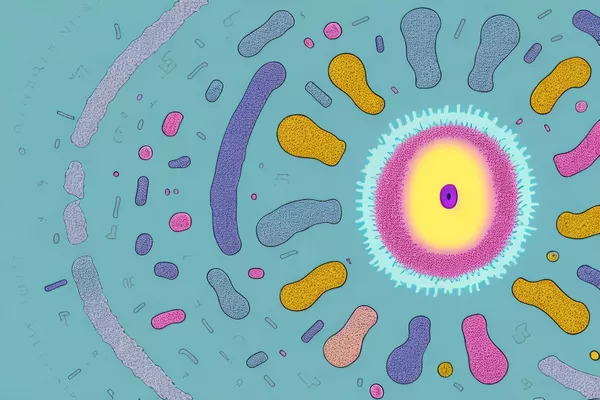Vitiligo is a chronic skin condition characterized by the loss of pigmentation, resulting in white patches on the skin. This condition, while not life-threatening or contagious, can significantly impact the quality of life due to its visible nature and the potential psychological effects on those affected. Understanding the stages of vitiligo can help in managing the condition more effectively and providing better support for those living with it.
Overview of Vitiligo
Vitiligo affects approximately 0.5% to 2% of the global population, irrespective of age, gender, or ethnicity. The exact cause of vitiligo remains unknown, but it is generally believed to be an autoimmune disorder in which the body’s immune system attacks and destroys the melanocytes, the cells responsible for producing skin pigment. Other factors such as genetic predisposition, environmental triggers, and stress may also play a role.
Initial Stages: Early Signs and Symptoms
The first stage of vitiligo is often subtle and may go unnoticed. It typically begins with small, pale patches on the skin. These patches are usually lighter than the surrounding skin and may appear on sun-exposed areas such as the face, hands, arms, and feet. In some cases, the patches may develop around body orifices like the eyes, nostrils, or mouth.
During this initial phase, the patches are usually flat and not itchy or painful. The depigmentation process starts gradually, and the borders of the patches may be slightly irregular. This early stage can last for several months to a few years, depending on various factors, including the individual’s immune response and environmental influences.
Progressive Stages: Expansion and Coalescence
As vitiligo progresses, the depigmented patches may start to expand and coalesce, forming larger and more noticeable areas of pigment loss. This stage can vary greatly among individuals, with some experiencing rapid progression and others having a more gradual spread. The progression of vitiligo is often unpredictable and can occur in spurts, with periods of rapid change followed by periods of stability.
During the progressive stages, the borders of the patches may become more defined and contrast sharply with the surrounding skin. The affected areas may spread symmetrically, often mirroring each other on opposite sides of the body. This symmetry is a characteristic feature of vitiligo, particularly in a subtype known as generalized vitiligo.
SEE ALSO: Can Vitiligo Go Away and Come Back?
Stable Stage: Plateau of Pigmentation Loss
In the stable stage, the progression of pigment loss slows down or stops altogether. The white patches remain present, but they do not expand or change significantly over time. This stage can last for months or even years and may represent a period of relative stability for individuals with vitiligo.
Stability in vitiligo does not necessarily mean that the condition is cured or will not progress in the future. It merely indicates a temporary halt in the spread of depigmentation. During this stage, some individuals may experience a slight repigmentation, especially if they are undergoing treatment or have made lifestyle changes to manage the condition.
Re-pigmentation Stage: Return of Pigment
Re-pigmentation, or the return of skin pigment, is possible in vitiligo, although it is not guaranteed. This stage can be achieved through various treatments, including topical corticosteroids, calcineurin inhibitors, phototherapy, and other medical or natural interventions. The success of re-pigmentation varies widely among individuals, depending on factors such as the duration of vitiligo, the extent of depigmentation, and the treatment methods used.
During the re-pigmentation stage, melanocytes may begin to regenerate and produce pigment in the affected areas. This process often starts at the edges of the white patches or around hair follicles, where melanocytes are still present. The new pigment may initially appear as small, dark spots that gradually spread and merge with the surrounding skin.
Advanced Stages: Chronic and Extensive Depigmentation
In advanced stages, vitiligo may affect large areas of the body, leading to extensive depigmentation. This stage is often referred to as chronic or universal vitiligo. Individuals with advanced vitiligo may have significant portions of their skin devoid of pigment, including areas that are less commonly affected, such as the scalp, armpits, and groin.
At this stage, the psychological and social impact of vitiligo can be profound. Individuals may experience feelings of self-consciousness, social anxiety, and depression due to the visible nature of the condition. Support from healthcare professionals, family, and support groups can be crucial in helping individuals cope with the emotional challenges associated with advanced vitiligo.
Factors Influencing the Stages of Vitiligo
Several factors can influence the progression and stages of vitiligo. Understanding these factors can help in managing the condition more effectively and tailoring treatment approaches to individual needs.
Genetic Predisposition
Genetics play a significant role in the development and progression of vitiligo. Individuals with a family history of vitiligo or other autoimmune diseases are at a higher risk of developing the condition. Genetic factors can also influence the severity and pattern of depigmentation.
Immune System Activity
Vitiligo is believed to be an autoimmune disorder, where the immune system mistakenly attacks the melanocytes. The activity of the immune system can affect the progression of vitiligo, with periods of heightened immune response potentially leading to faster depigmentation.
Environmental Triggers
Environmental factors such as sun exposure, chemical exposure, and physical trauma to the skin can trigger or exacerbate vitiligo. Sunburn, in particular, can lead to the formation of new patches or the expansion of existing ones.
Stress and Psychological Factors
Stress and psychological factors can influence the course of vitiligo. Emotional stress and trauma have been linked to the onset and progression of vitiligo in some individuals. Managing stress through relaxation techniques, therapy, and support can be beneficial in controlling the condition.
Hormonal Changes
Hormonal changes, such as those occurring during puberty, pregnancy, or menopause, can impact the progression of vitiligo. These hormonal shifts may influence the immune system and affect the melanocytes’ ability to produce pigment.
Treatment and Management of Vitiligo
While there is no cure for vitiligo, various treatment options can help manage the condition and promote re-pigmentation. The choice of treatment depends on the stage of vitiligo, the extent of depigmentation, and the individual’s preferences and overall health.
Topical Treatments
Topical corticosteroids and calcineurin inhibitors are commonly used to treat localized vitiligo. These medications help reduce inflammation and suppress the immune response, potentially promoting re-pigmentation in affected areas.
Phototherapy
Phototherapy, also known as light therapy, involves exposing the skin to ultraviolet (UV) light under medical supervision. Narrowband UVB (NB-UVB) therapy is a widely used form of phototherapy for vitiligo. It helps stimulate melanocyte activity and promote re-pigmentation.
Oral Medications
In some cases, oral medications such as corticosteroids or immunosuppressants may be prescribed to manage vitiligo, particularly in rapidly progressing or extensive cases. These medications help modulate the immune system and reduce the attack on melanocytes.
Surgical Treatments
For individuals with stable vitiligo, surgical options such as skin grafting or melanocyte transplantation may be considered. These procedures involve transplanting healthy, pigmented skin or melanocytes to the depigmented areas, promoting re-pigmentation.
Camouflage Techniques
Cosmetic camouflage techniques, including makeup and self-tanning products, can help individuals with vitiligo conceal the white patches and achieve a more uniform skin tone. These techniques can enhance self-confidence and improve the quality of life.
Living with Vitiligo: Coping and Support
Living with vitiligo can be challenging, especially in the advanced stages where the condition is more visible. Coping strategies and support systems are essential for managing the emotional and psychological impact of vitiligo.
Psychological Support
Psychological support from therapists, counselors, or support groups can help individuals cope with the emotional challenges of vitiligo. Sharing experiences with others who have vitiligo can provide comfort, understanding, and valuable coping strategies.
Education and Awareness
Educating oneself about vitiligo and its stages can empower individuals to take control of their condition and make informed decisions about treatment and management. Awareness campaigns and community initiatives can also help reduce the stigma associated with vitiligo and promote acceptance.
Healthy Lifestyle Choices
Maintaining a healthy lifestyle can positively impact the course of vitiligo. A balanced diet, regular exercise, stress management, and adequate sun protection can support overall well-being and potentially slow the progression of vitiligo.
Conclusion
Vitiligo is a complex and multifaceted condition with varying stages of progression and re-pigmentation. Understanding these stages can help individuals and healthcare providers manage the condition more effectively and provide better support for those affected. While vitiligo presents unique challenges, with proper treatment, support, and self-care, individuals can lead fulfilling lives and embrace their unique appearance.
Related Topics:

























